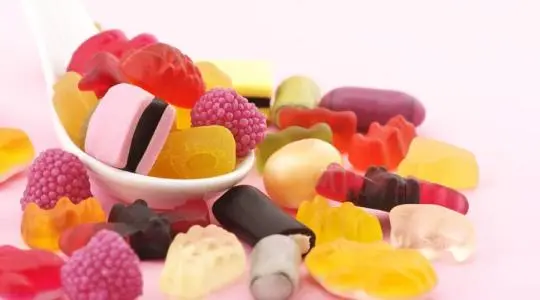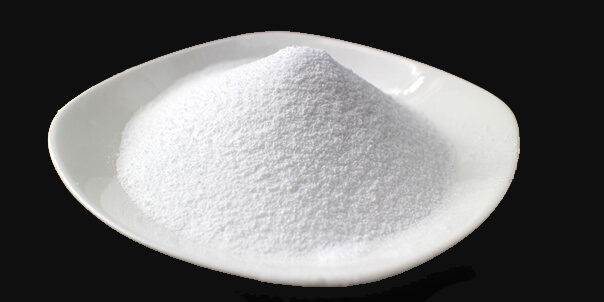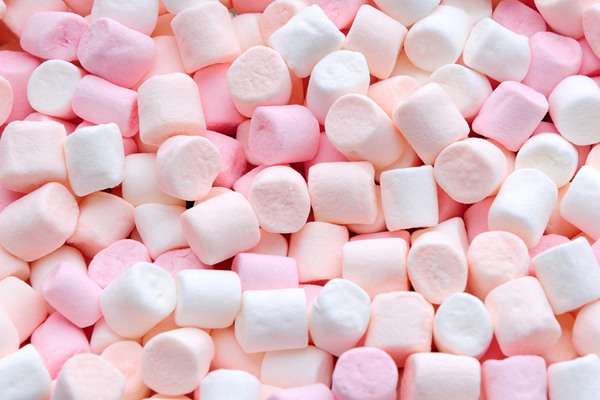Gelatin water solution is stable under specific temperature range depending on the quality and concentration of gelatin. The gelatin that are used in making foods like marshmallows, soften and collapse at below body temperature creating a "melt in the mouth" sensation when the food is eaten and releasing flavor fused in it.
Gelatin is also used in making desserts, gummies, yogurts besides marshmallows. It's has found its applications in certain meat products as well to prevent them from drying out and to give them an attractive glaze.
Generally speaking, gelatin is a useful food ingredient that are widely used for its thickening, binding, emulsifying, and adhesive properties. Moreover, it attracts impurities and clarifies the body of drinks like juices, wines, and vinegar.
Gelatin in Foods: Stock, Consommé & Aspic
Stock is a soup made by stewing meat and vegetables for a lengthy period of time. The solids in the soup provide flavor while the meat provides collagen. Once finished, the solids are filtered out and the liquid leftover is stock.
Consommé is a clarified stock. Using egg whites in the finished stock for its property of absorbing particles from the soup and forming a film on its surface when heated. As the egg whites solidify, a clear consommé is ready under it.
An aspic is a special dish in which a gelatin gel made from a meat stock, or more often, from a consommé surrounds and encases a chop of meat. After the stock is done, it is cooled a bit so that it thickens and then been poured over meat in a mold. Gelatin is often used in the stock in order to form a proper gel with the right texture if the stock is not thick enough.
Colorless gelatin gel is commonly used in aspics commercially available on the market for retail, so that the meat inside is visible clearly. The gelatin gel encasing makes the meat easier to cut and without causing it to disintegrate. The word “Aspic” refers to the many more kinds of food in which various content is encased in a gelatin gel. So, use your imagination!
Gelatin is also often added to such low-fat dairy products as yogurt, buttermilk, and ice cream for providing the mouthfeel of fat when eating them. In some cases, it’s also be added into full-fat products for providing a smoother and creamier mouthfeel when the gel breaks up in the mouth. Adding gelatin in creams and whipped toppings helps to stabilize their consistencies.
Fresh pineapple and papaya contain enzymes which stop gelatin from forming a gel. The enzyme mixture in pineapple is called bromelain while in papaya the kind of enzyme is papain. These chemicals prevent formation of the bonds needed to hold the amino acid chains together in gelatin, therefore the gel form can no longer be obtained. Industrial heating process applied during production of canned fruit usually destroys those enzymes so canned pineapple does not contain bromelain. Other foods might prevent the gelatin from forming a gel include kiwi, figs, guava, and ginger. But any of those mentioned foods should allow the gel to be set after being heated during pasteurization or other processes as the critical enzymes have been destroyed.
One of most favorable gelatin desserts there is, would be mousse. The recipe is quite simple, mixing jelly powder with evaporated milk, whip the mixture and then put in the refrigerator for texture forming.
You can find gelatin in a variety of cosmetics or skin care products. Skin creams and lotions, face masks, shampoos, hair conditioners, hair sprays, nail polishes, and lipsticks, the list goes on. It's referred to as "hydrolyzed animal protein" sometimes. Gelatin in those products retains moisture and thickens the texture to give a creamy look.
Gelatin for Making Hard and Soft Capsules
Gelatin is also used in making hard and soft capsules to enclose medication and supplements. Hard capsules are made by dipping a stainless-steel mold into a warm gelatin solution then the capsules are later filled with functional contents of the drug and nutraceuticals. Soft capsules, also known as softgels, are made from gelatin sheets and the functional contents are filled as they are made. This difference is a result of the capsule making process as hard capsule has two pieces which can be capped later and softgels are formed wholly with its content during production. Gelatin is the most important raw material in making capsules.
Medicinal Properties of Gelatin
Allegedly, gelatin is a natural cure for weak nails and hair, arthritis pain, joint pain, and osteoporosis while others say it's beneficial for weight loss and for recovery after exercise. But, for the moment, there is little scientific evidence that the substance has medicinal benefits. Nevertheless, people claim that they find it useful for joint problems.
Other Uses of Gelatin
Gelatin is a versatile medium in arts and crafts for both adults and children too. It's not the only gelatin for foods but also used in some fun and unexpected ways as following:
- Plates for printing
- Sculptures
- Cake decorations
- Suncatchers for hanging up in a window
- Lenses
- Edible models for school projects
- Gummy worms (by putting gelatin in straws and allowing it to set)
- Air fresheners (after a scent is added)
- Photographic emulsions for film and paper
- The shells of paintballs
- Some types of glue
Gelatin is sometimes used as a binder for ingredients in match heads and sandpaper, though other substances can also be used to perform in these fields instead.
Gelatin is used by swimmers to hold their hair in place for its thermally reversible trait. The substance stays in until the hair is washed with hot water. A nick name for the process of creating the hair gel is "Knoxing", it’s named after a popular brand of gelatin.
The gelatin gels are so widely used in food and medicines due to its thermally reversible property which grants gelatin the ability of becoming a liquid as they warm up and gel when cooled down. But in some industrial applications, gelatin gels are mixed with chemicals which removes the thermally reversibility.
Besides gelatin in foods, have you already gotten the information about gelatin in other areas?
 GelatinLearn More
GelatinLearn More Collagen PeptidesLearn More
Collagen PeptidesLearn More


